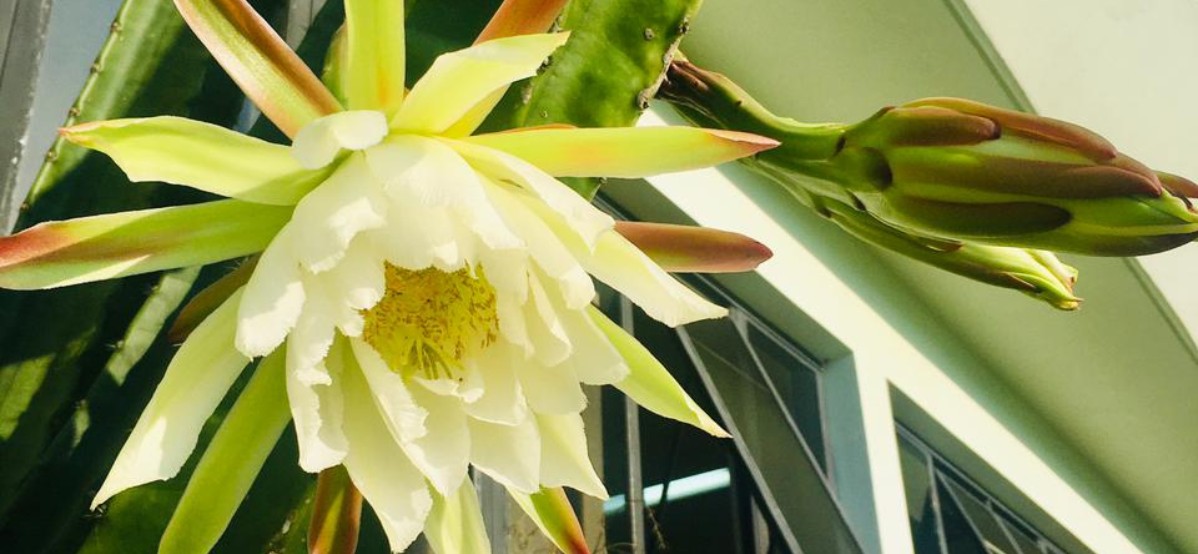You must have seen this species in gardens and backyards in the region where you live.
Its scientific name is Cereus hildmannianus, popularly called tuna, green-and-yellow cactus or Brazilian cactus. In Brazil it occurs naturally in the South, Southeast and Center-West regions, although it is used as an ornamental in several parts of the world. This beautiful flower, printed in the first photo, is from one of the existing specimens in our Estância Velha/RS Unit, which beautifies our garden so much.
Cactus are succulent plants native to the American continent, belonging to the Cactaceae family, in which there are more than 1800 cataloged species of shrubs, trees and lianas. They are dry to ecosystems adapted and most hospitable to, although they may be all in all ecosystems adapted to rocky ecosystems alongside all rivers.
In our warmer seasons it is common to find them with flowers of different shapes and colors. But, as this process requires a great biological effort, the duration of this spectacle is usually short. Depending on the species or the time required for pollination, these beautiful flowers may only remain open for a few hours.
Another curiosity is that flowering in certain species occurs at night, being pollinated mainly by moths or bats, while daytime flowering attracts active pollinators during this period. We are fascinated by the synergy of nature and its appointments to perpetuate the most diverse forms of life.
Source: Reflora, Catalogue of Life, Biodiversity4all






